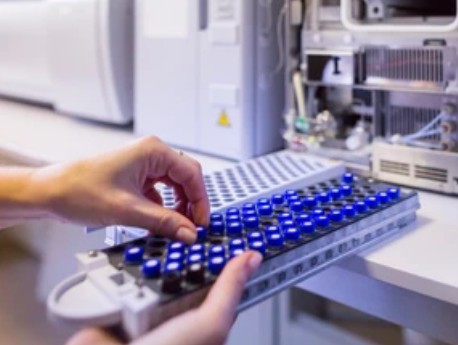
- Home
- PTMs Proteomics
- Phosphoproteomics Analysis
- Quantitative Phosphoproteomics Analysis Service
According to today's estimates, 30% of the protein will be phosphorylated to some extent. Since phosphorylation is involved in regulating almost all cellular activities, including cell proliferation, differentiation, and apoptosis, the quantitative analysis of phosphorylation can provide many interesting insights into the inner workings of cells under different conditions. Based on advanced protein/peptide enrichment technology and mass spectrometry (MS) quantitative techniques, Creative Proteomics can help our global customers to perform deep and accurate quantitative phosphoproteomics analysis.
Protein phosphorylation is an important protein PTM, accounting for about one-third of all proteins, and can occur on proteins serine, threonine, and tyrosine. Protein phosphorylation is mainly regulated by protein kinase and phosphatase, two enzyme systems with opposite roles. The process of phosphorylation is the transfer of the phosphate group of ATP to the amino acid side chain of the protein, catalyzed by kinase, and the subsequent change of ATP to ADP. For most proteins, phosphorylation modifications are reversible and transient, and when a site in a protein helps the protein to complete its task, the protein is dephosphorylated by the action of phosphatase, which acts as a "switch" for protein function. Protein phosphorylation is involved in a variety of cellular activities, such as intracellular signal transduction, cell proliferation, apoptosis, transcription, metabolic processes, and regulation of the adaptive capacity of pathogenic microorganisms, etc.

Our phosphoproteomics analysis service is based on several quantitative proteomics methods, including label-free, stable isotope labeling with amino acids in cell culture (SILAC), isobaric tags for relative and absolute quantification (iTRAQ), and tandem mass tags (TMT). Among them, label-free quantification usually uses spectral counting and can also include extracted ion chromatograms for further quantification, and is a reliable method for estimating relative protein abundance and protein phosphorylation events. And SILAC and iTRAQ are currently the most commonly used techniques in MS-based quantitative phosphoproteomics. In addition to a large-scale discovery phosphoproteomics approach, we also apply multiple reaction monitoring (MRM) to quantify targeted phosphopeptides. Our service can help our global clients achieve the following lists, including global phosphoproteomics and site-specific phosphoproteomics.

There are a series of labeling methods for quantitative proteomics, including label-free or label-based methods. The label-based proteomic analysis provides higher relative quantification accuracy, which allows for identifying minute differences between samples or experimental conditions. Additionally, they can also be applied to investigate time-resolved profiling of protein abundances as well as dynamic protein turnover. Compared with label-based methods, label-free proteomics is relatively inexpensive and less time-consuming. Protein phosphorylation is dynamically regulated in almost all known cellular signaling pathways and has profound effects on the propagation of intracellular signals. If you are interested in our services, please contact us for more details. Our clients have direct access to our staff and prompt feedback on their inquiries.
Our products and services are for research use only.